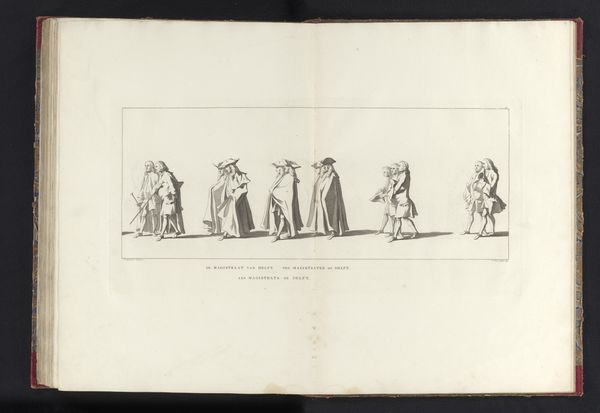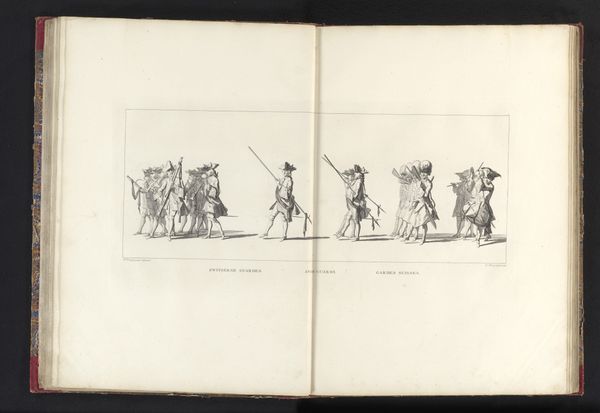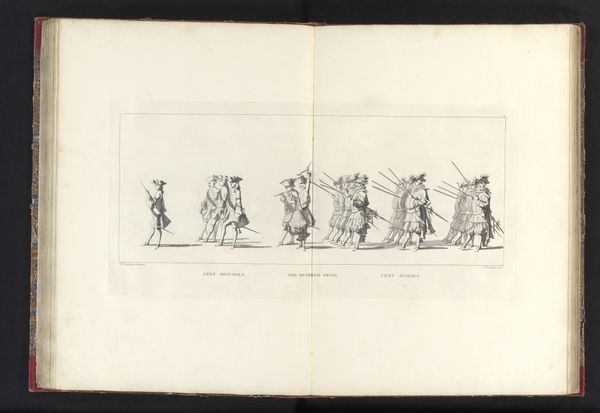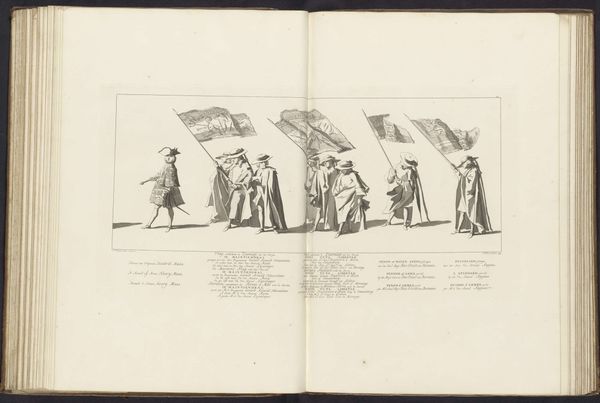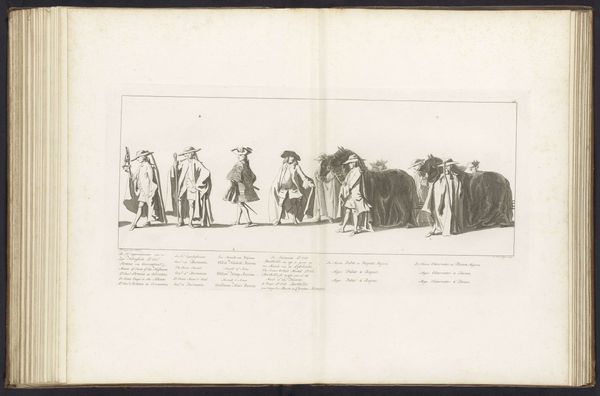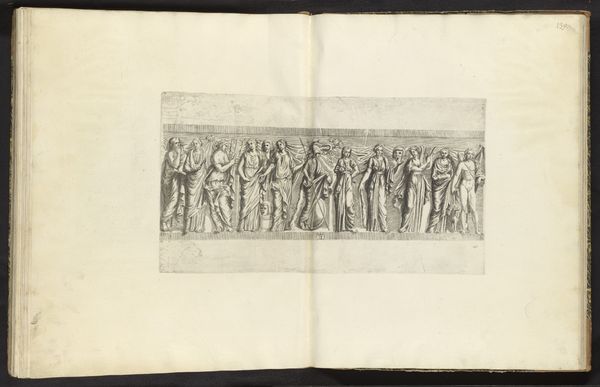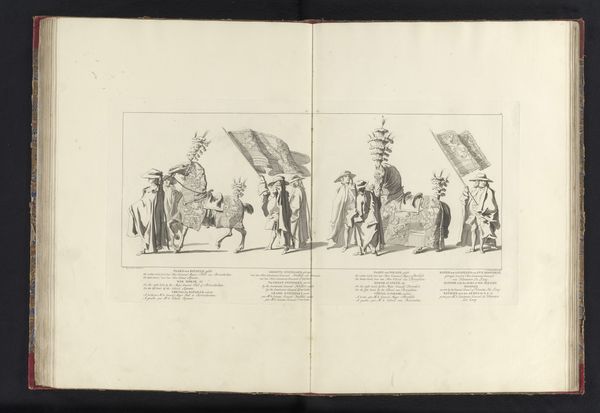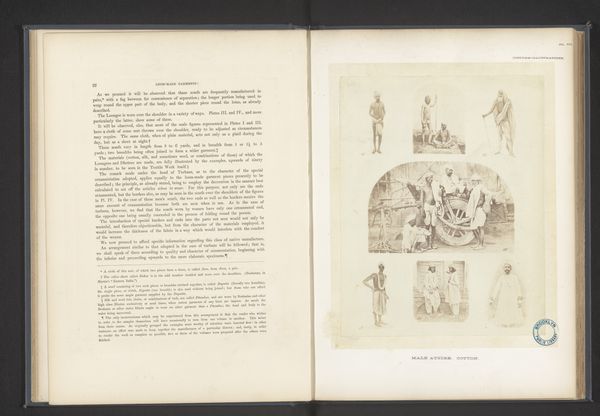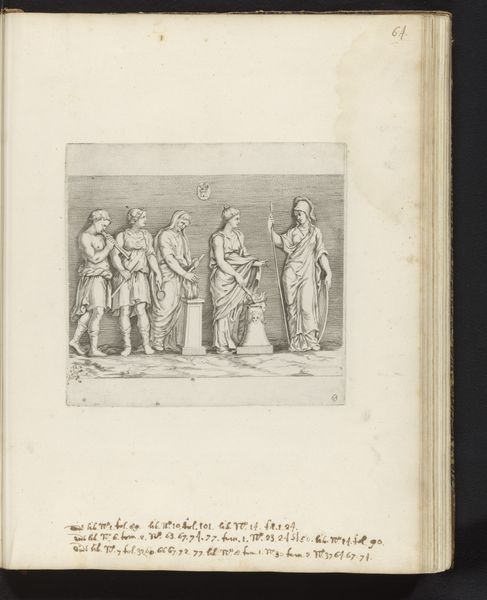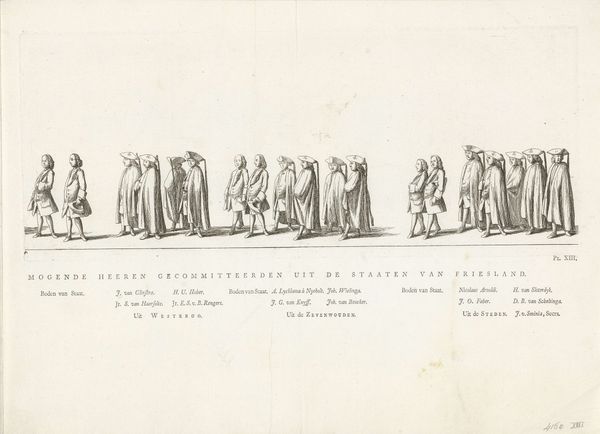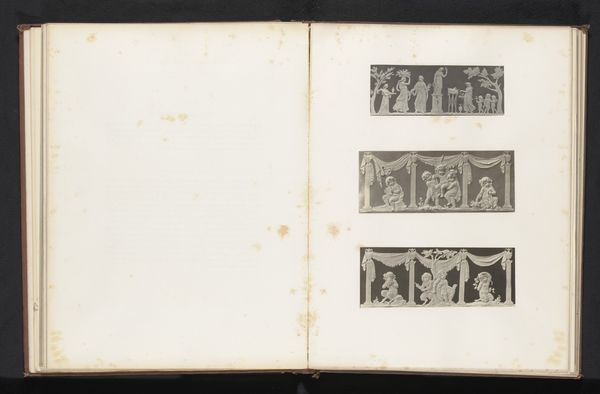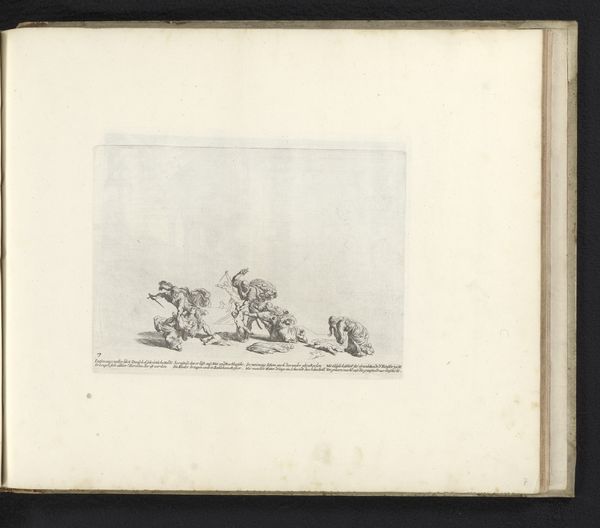
drawing, print, ink
#
drawing
#
narrative-art
#
baroque
# print
#
figuration
#
ink
#
line
#
history-painting
Dimensions: height 270 mm, width 560 mm
Copyright: Rijks Museum: Open Domain
Curator: This is Plate 17 from a series depicting the funeral procession of Willem IV, created by Jan Punt between 1753 and 1755, now residing here at the Rijksmuseum. Editor: It's a stark image. The stark contrast in line work, using ink in the drawing, is somehow fitting for a somber event. You immediately notice how the figures are distanced, creating an eerie emptiness within the crowd. Curator: The engraving medium itself plays a significant role. Mass-produced prints like these, often bound in series, helped to disseminate and consolidate the image of leadership amongst the populace during an era defined by social stratification and nascent nationalism. The Baroque style would certainly aid in promoting a larger-than-life idea about leadership, no? Editor: The linearity in this piece is remarkable. Note the stark, rhythmic arrangement of figures and forms. There is something inherently staged about the uniformity – everyone in the scene wears matching costumes and similar stature. The way they carry themselves becomes more about geometric perfection, perhaps mirroring an obsession of order. Curator: Consider how such prints functioned as proto-newspapers, visually constructing and reinforcing a desired public perception. Jan Punt didn’t just create art; he produced propaganda tools that cemented Willem IV's image, utilizing the existing distribution channels of the print market and its relation to the political state apparatus. Editor: What truly makes this artwork are its compositional balances and imbalances: light versus dark spaces, density, the careful modulation within those sparse lines. While portraying what was arguably somber circumstances— the procession itself and passing— it gives an equal amount thought in structuring what could have turned emotional excess within baroque painting. Curator: It makes one wonder about Jan Punt’s studio, the role of apprentices in cranking out copies for eager buyers… Each impression pulled contributes to our understanding about 18th century media economies. Editor: Precisely. Through a seemingly simplistic formal arrangement, these stark visuals achieve more: rhythm with somber overtones where light emphasizes grief while hinting at what cannot escape all passing time no matter status quo position or rank within hierarchy whether portrayed then –or reflected back on its viewer even now centuries after passing!
Comments
No comments
Be the first to comment and join the conversation on the ultimate creative platform.
